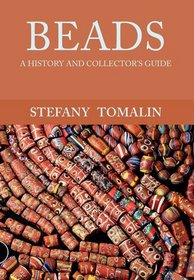Search -
Beads: A History and Collector's Guide
Beads A History and Collector's Guide
Author:
In the '60/70s beads were underresearched. Even today in UK antique markets, necklaces and single beads still turn up in bargain boxes at cheap prices, whether glass, plastic, semiprecious stones or ethnic jewellery, holiday souvenirs or lavish carnival costume accessories. Throughout history beads show prestige and wealth, as trade goods, heirl... more »
Author:
In the '60/70s beads were underresearched. Even today in UK antique markets, necklaces and single beads still turn up in bargain boxes at cheap prices, whether glass, plastic, semiprecious stones or ethnic jewellery, holiday souvenirs or lavish carnival costume accessories. Throughout history beads show prestige and wealth, as trade goods, heirl... more »
ISBN-13: 9781445658650
ISBN-10: 1445658658
Publication Date: 9/15/2016
Pages: 96
Rating: ?
ISBN-10: 1445658658
Publication Date: 9/15/2016
Pages: 96
Rating: ?
0 stars, based on 0 rating
Publisher: Amberley Publishing
Book Type: Paperback
Members Wishing: 1
Reviews: Amazon | Write a Review
Book Type: Paperback
Members Wishing: 1
Reviews: Amazon | Write a Review
Genres:
- History >> Historical Study & Educational Resources
- Reference >> Encyclopedias & Subject Guides >> Antiques & Collectibles
- Crafts, Hobbies & Home >> Antiques & Collectibles >> Jewelry
- Crafts, Hobbies & Home >> Crafts & Hobbies >> Decorating
- Crafts, Hobbies & Home >> Crafts & Hobbies >> Beadwork
- Crafts, Hobbies & Home >> Crafts & Hobbies >> Jewelry




